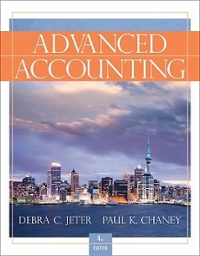Question
1. P purchased a business machine from S at a price of $100,000. P paid S $10,000 cash and agreed to pay $90,000 balance in
1. P purchased a business machine from S at a price of $100,000. P paid S $10,000 cash and agreed to pay $90,000 balance in nine equal annual installments beginning in the following year. The deferred payments were secured by a security interest in the machine. Two years later, P had reduced the principal balance of the debt to $70,000, but the machine had fallen in value to $50,000. At that point, S agreed to accept $50,000 in full satisfaction of the debt principal. What result to P if:
(a) P was insolvent immediately after S reduced the debt?
(b) Alternatively, P was solvent at all times?
2. T purchased a building for $500 (000 omitted throughout). T paid $100 cash down and gave a non-recourse note (secured by a mortgage on the property) for the $400 balance. T held the property as an investment. In answering the following question, ignore the land, as if only the building were purchased and sold.
(a) What is Ts basis for depreciation?
(b) Over the next several years, T properly deducts $300 of depreciation, pays $100 on the mortgage principal, and makes all required interest payments. T then sells the building to P, who takes the property subject to the remaining $300 mortgage and pays T $250 cash. What is the amount of Ts realized gain or loss?
(c) Suppose instead that after T had properly deducted the $300 of depreciation and reduced the mortgage principal to $300, the building declined in value to $275, at which point T surrendered the property to the mortgagee. What result to T?
(d) Same as (c), except that the building was worth only $150 when it was surrendered to the mortgagee.
(e) How would your answers in (c) differ if T had been personally liable on the indebtedness, but the mortgagee had accepted the property in full satisfaction of the indebtedness? Assume here that T is insolvent immediately after the debt discharge.
(f) How would your answers to (d) differ if T had been personally liable on the indebtedness, but the mortgagee had accepted the property in full satisfaction of the indebtedness? Assume here the T is insolvent immediately after the debt discharge.
Step by Step Solution
There are 3 Steps involved in it
Step: 1

Get Instant Access to Expert-Tailored Solutions
See step-by-step solutions with expert insights and AI powered tools for academic success
Step: 2

Step: 3

Ace Your Homework with AI
Get the answers you need in no time with our AI-driven, step-by-step assistance
Get Started


